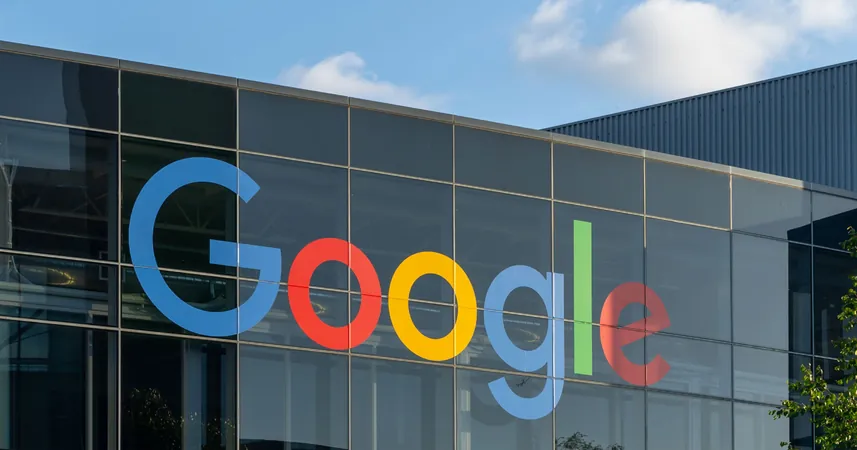
How Google’s New Insights on CDNs Can Boost Your SEO Game and Avoid Common Pitfalls!
2024-12-29
Author: Mei
What Exactly is a CDN?
A Content Delivery Network (CDN) functions as a distributed system that caches web pages, delivering them from data centers closer to the user’s location. By creating copies of web pages and storing them at various locations, CDNs drastically reduce loading times because users access content from a nearby server rather than the origin site, resulting in a faster browsing experience.
Unlocking Enhanced Crawling Opportunities
One of the standout benefits of deploying a CDN is its potential to improve crawling rates. Google has reported that websites utilizing CDNs can experience a notable increase in the frequency with which Googlebot crawls their pages. This is a game-changer for SEO experts and content publishers eager to optimize the visibility of their pages.
Typically, Googlebot may throttle its crawling activity if it detects performance issues on a server, thereby limiting the number of pages it crawls. However, with a CDN in play, this threshold is elevated, allowing for more extensive crawling opportunities.
It’s crucial to remember, though, that initially, when a URL is first accessed via a CDN, the cache is “cold.” This means that the first request must be served from your origin server. For instance, if your website has over a million pages, those will need to be visited at least once to warm up the cache. Be prepared for a significant impact on your crawling budget during this initial phase, particularly if you're launching multiple URLs simultaneously.
When CDNs Become a Double-Edged Sword
However, all is not seamless with CDNs. Google cautions website owners that in certain situations, CDNs can inadvertently block Googlebot’s crawling efforts. These blocks can occur in two primary forms:
1. **Hard Blocks**: Such as when the CDN returns server errors like a 500 (internal server error) or a 502 (bad gateway). These signals can lead Googlebot to reduce crawling rates significantly, which could jeopardize indexed URLs if the errors persist.
2. **Soft Blocks**: This occurs when a CDN prompts a “Are you human?” captcha or similar verification to Googlebot. If these pop-ups appear, it’s vital to send a 503 status code to let crawlers know the content is temporarily unavailable, avoiding automatic removal from Google’s index.
Essential Recommendations for Troubleshooting
Google emphasizes the importance of utilizing the URL Inspection Tool in Google Search Console to investigate how your CDN is serving web pages. If a Web Application Firewall (WAF) is blocking Googlebot, check against Google’s list of IP addresses to ensure that critical crawlers aren’t inadvertently blocked.
To enhance your site’s visibility in search engines, it’s imperative to ensure that the crawlers of interest can access your site without obstructions. Regularly review your blocklists, and if they seem lengthy, focus on the initial segments of the IP ranges.
Conclusion: Maximize Your CDN Strategy
Understanding the nuances of CDNs can be pivotal in leveraging their benefits while avoiding potential pitfalls. As website owners and marketers, it’s essential to stay informed about how CDNs interact with search engines. Make sure to follow Google's latest guidelines for optimum crawling efficiency and take advantage of tools that help debug any issues.
Feeling overwhelmed? You’re not alone! Stay tuned for more insights on optimizing your SEO strategy and ensuring your content remains accessible to all!


 Brasil (PT)
Brasil (PT)
 Canada (EN)
Canada (EN)
 Chile (ES)
Chile (ES)
 Česko (CS)
Česko (CS)
 대한민국 (KO)
대한민국 (KO)
 España (ES)
España (ES)
 France (FR)
France (FR)
 Hong Kong (EN)
Hong Kong (EN)
 Italia (IT)
Italia (IT)
 日本 (JA)
日本 (JA)
 Magyarország (HU)
Magyarország (HU)
 Norge (NO)
Norge (NO)
 Polska (PL)
Polska (PL)
 Schweiz (DE)
Schweiz (DE)
 Singapore (EN)
Singapore (EN)
 Sverige (SV)
Sverige (SV)
 Suomi (FI)
Suomi (FI)
 Türkiye (TR)
Türkiye (TR)
 الإمارات العربية المتحدة (AR)
الإمارات العربية المتحدة (AR)